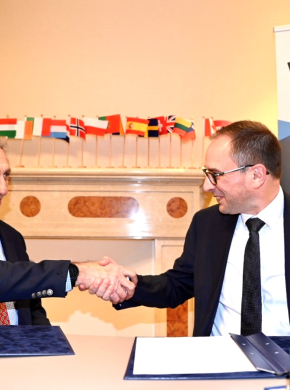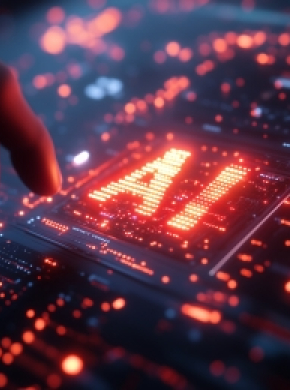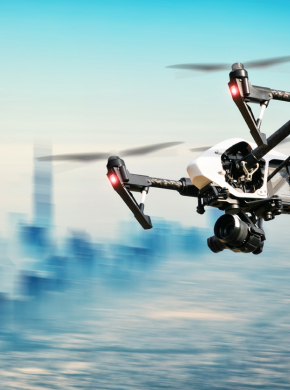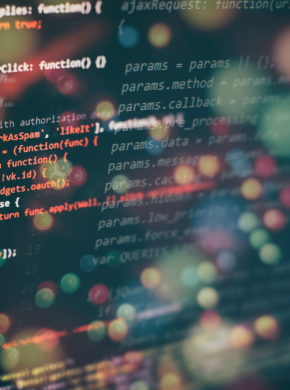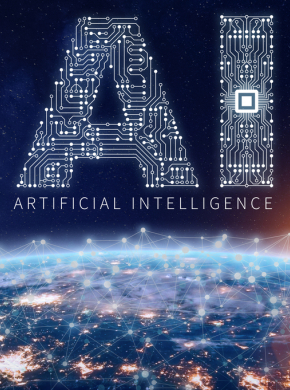ESA-STAR Reference number: E/0501-01F - Future Prep 4.0.2
Opening date: 20/10/2023
Closing date: 17/01/2024
ESA’s Future Programmes
Part of ESA’s ARTES Future Programme’s mission is to accelerate the satellite industry's transition to fully autonomous spacecraft, thereby reducing the need for human intervention. We will achieve this by:
- Analysing operational scenarios
- Deriving system requirements
- Leveraging advanced AI techniques
The goal here is to create satellites capable of managing their operations autonomously, acquiring telemetry and making decisions. This journey involves three key phases, with the first phase focusing on system requirements and high-level architecture. Subsequent phases will develop crucial building blocks, and an Integration of Existing (IOE) phase will accelerate the integration of autonomous components and gather in-flight data.
Background
To help the next generation of satellites, especially within constellations, reach a higher level of autonomy, a groundbreaking end-to-end (E2E) architecture impacting both space and ground segments, will be essential. Related technologies have been evolving for years, and are now sufficiently matured to confirm that we are on the right path. The time has now come to adopt a more systematic and comprehensive approach.
The role of Artificial Intelligence (AI)
Harnessing selected Artificial Intelligence (AI) techniques in a strategic manner, with a particular focus on Machine Learning (ML), will be vital in facilitating this transformative approach.. With future satellite platforms expected to aim for twice the current level of onboard autonomy - including autonomously acquiring telemetry and issuing commands while continuously monitoring subsystem performance - . these technologies will play a pivotal role in enabling a whole new set of capabilities.
Within the context of complex constellations, this enhanced autonomy will significantly reduce the need for routine ground operations, which will in turn allow these resources to concentrate on higher-level constellation management functions. Achieving this ambitious autonomy increase necessitates a new architectural paradigm that leverages AI. This approach not only boosts operational autonomy but also introduces the concept of Predictive Maintenance as an alternative to the currently adopted Planned Maintenance, along with constellation replenishment.
A key feature of this proposed approach lies in its multidisciplinary nature which includes:
- Addressing the entire system as a holistic problem
- Redefining different subsystems and incorporating their operations from the early stages
- Accelerating technology maturation
- Offering industry a unique opportunity to integrate and orchestrate all necessary building blocks to demonstrate advanced onboard autonomy in a realistic flight environment.
The transition will be from individual unit or subsystem autonomy to full spacecraft autonomy, encompassing spacecraft health monitoring and self-healing capabilities as a minimum.
It is likely that subsequent developments will include autonomous cooperation with other satellites within the same fleet or constellation, with the aim of reducing system unavailability by predicting and addressing potential anomalies without human intervention.
Objectives of the activity
This activity focuses on the first phase of our mission towards achieving satellite autonomy- determining the system requirements and high-level architecture. The primary objectives are to develop a new, fully autonomous architecture for future satcom platforms, revolutionising large constellations management. This will involve reducing operational expenses (OPEX) and increasing the complexity of constellation capabilities while transitioning from planned or failure-triggered replenishment to performance drift monitoring and potential life extension.
The enhancement of satellite autonomy implies a significant reduction in the reliance on human intervention for various operational tasks. This paradigm shift should consider at least both the initiation and the reaction of actions as described below:
1. Initiation - Streamlining and eliminating manual tasks in operational planning:
As satellite autonomy increases, there is a need to optimise and simplify the planning operations that have traditionally involved human intervention. By leveraging advanced automation and artificial intelligence technologies, manual tasks will be minimised and, ideally, eliminated altogether (a step-by-step approach can be proposed if resources or technologies do not allow total autonomy to be implemented).
This allows for more efficient and streamlined satellite operations, as well as reducing the potential for human errors or delays in decision-making.
2. Reaction - Autonomous handling of outages by space and ground systems:
Another crucial aspect of satellite autonomy will be the ability of space and ground systems to respond autonomously to outages. In the event of an interruption or malfunction, the systems must have the capability to detect and diagnose the issue independently. They should then initiate appropriate recovery measures or contingency plans without requiring direct human intervention. This end-to-end autonomous response ensures that satellite services are restored swiftly and effectively, minimising downtime and maximising operational efficiency (quantification shall be proposed).
Key Tasks:
- Assess possible operative scenarios where onboard autonomy is required
- Capture key operations requirements
- Trade-off different architecture concepts and identify a reference one
- Identify architecture blocks and derive the main high-level requirements, leaving room for specific implementation solutions
- Perform a feasibility assessment for the reference architecture of an In-Orbit demonstration experiment
The feasibility assessment for launching an in-orbit experimental mission to demonstrate the capabilities of this intelligent platform could lead to future demonstrator missions.
What we are looking for
- Digital Electronics and SW Defined Solutions: Proficiency in reconfigurable systems and digital electronics.
- Autonomous Systems and Data Processing: Expertise in AI and failure prediction algorithms.
- Satcom System Engineering: Skills in link budgets, physical layers, and system capacity assessment.
- Space System Engineering: Knowledge in mission analysis, orbital mechanics, power systems, and platforms.
- Space Asset Orchestration: Ability to design the operations of single satellites, fleets, and constellations.
- Data Engineering and Management: Skills in data collection, storage, and processing.
- Ground Systems and Operations: Expertise in ground stations, telemetry, control
How to apply
Proposals can be submitted via esa-star (please find the link below) until 17/01/2024 13:00 CET
https://esastar-publication-ext.sso.esa.int/ESATenderActions/details/65…
ABOUT THE ARTES FUTURE PREPARATION PROGRAMME
ARTES FP is a key programme element, based on the concept of a European common effort to produce quality results to set the future of SatCom. Sitting at the beginning of the ARTES ‘food chain’ it offers the opportunity to acquire knowledge on future satcom market perspectives, investigate future system concepts and prepare initial ‘dossiers’ on strategic initiatives that would not be possible to develop at individual Member State level.
You can find more information in the link below:
https://artes.esa.int/future-preparation
NEWS AND EVENTS
ESA and Viasat towards a Direct-to-Device partnership
The European Space Agency (ESA) and Viasat announced an agreement to work together towards a public-private partnership for a direct-to-device project. As part of ESA’s direct-to-device initiative, the partnership…
European Space Agency kicks off groundbreaking generative AI project for satellite communication de…
Applied Data Science Partners (ADSP) is running a study on behalf of ESA to explore how generative artificial intelligence (AI) can transform satellite system design processes.
Opportunity: Concepts for ultra-large aperture antennas (ARTES FPE 1A.113)
Satellite antenna size and the data throughput achievable in a satellite communications channel are directly related, but the benefits from an increased aperture size can also be used to enable access to smaller ground antennas or to improve…
Opportunity: Towards Standardised Inter-Satellite Link Solutions (ARTES FPE 1A.116)
There has been a steady growth in the number of new satcom systems announcing plans to make use of RF Inter-Satellite Link technology. In addition to reducing the complexity and cost of the associated terrestrial infrastructure, ISL…
Opportunity: Advanced Broadband Satcom Solutions for Rotary Wing Aircraft (ARTES FPE 1B.136)
Despite steady order growth for helicopters and an almost exponential growth in rotary wing UAVs worldwide, outside of military and defence applications the utilisation of satellite connectivity onboard such rotary wing aircraft is still somewhat…
REISSUED - Opportunity: Single Channel Full Duplex Techniques for Satellite Communications (ART…
In most satellite communication systems, full duplex operation (i.e., simultaneous transmit and receive functionality) is achieved by using two separate frequency channels with spectral filtering employed to achieve the required isolation between…
Space for Inspiration: Business Edition 2022
Sign up now to join the growing community to discuss the future of commercialisation in exploration. This event is a must for key players in commercialisation ranging from private industry, to public organisations and space agencies to financial…
Opportunity: Open-Source Satellite Constellation Simulator
The communications satellite manufacturing industry is going through a period of profound change. For decades, the primary source of sector revenue has been from building systems designed to operate in geostationary orbits. Within the last few…
The Moon – where no satnav has gone before
The test version of a unique satellite navigation receiver has been delivered for integration testing on the Lunar Pathfinder spacecraft. The NaviMoon satnav receiver is designed to perform the farthest ever positioning fix from Earth,…
Opportunity: The Application of Neuromorphic Processors to SatCom Applications
Artificial Intelligence (AI) is set to play a major role in the automation of future satcom systems, enabled by the significant advances in Machine Learning (ML) techniques of recent years. However, the computer processors that AI algorithms will…
Final Presentation Webinar - ARTES Future Preparation Machine Learnin…
ESA would like to invite you to the Final Presentation Webinar of the ARTES Future Preparation (FP) activity Machine Learning and Artificial Intelligence for Satellite Telecommunications.
This Webinar will take place on the 9th of June at…
ESA Satcom Final Presentation Days 2019
This is a unique opportunity to gain an overview of all the recently completed activities and to discuss them with colleagues from both ESA and industry across the satellite telecommunications sector.




